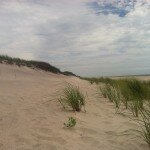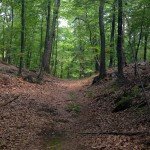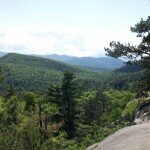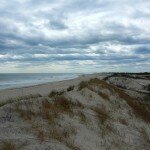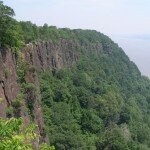Gateway National Recreation Area: Hiking the Staten Island Unit
Established by the National Park Service in 1972, Gateway National Recreation Area offers a unique collection of disparate maritime parklands that extend from Brooklyn, to Staten Island, and south to Sandy Hook, New Jersey. Due to the geographic expanse of Gateway NRA, our introduction to the area is separated into three overviews. This portion covers The Staten Island Unit, which is chiefly comprised of Great Kills Park and the Fort Wadsworth complex. We’ll cover the Sandy Hook and Jamaica Bay Units in forthcoming overviews.
Hiking Highlights — Gateway National Recreation Area
At 500+ acres, Great Kills Park is the largest, and most remote, section of Gateway on Staten Island. Opened in 1949, following decades of construction, Great Kills Park was envisioned as an oceanside escape for mid-century urbanites flush with post-war disposable income. With its large protected harbor and expansive wetlands, Great Kills is regarded as a significant estuary for many species of fish and bird, including Osprey. On Crooke’s point—the slender peninsula that encloses the harbor—hikers and naturalists will find miles of walking paths and access to some nice sandy beaches.
Getting to Great Kills Park: Hikers should take note that inland sections of the park are closed due to an ongoing environmental cleanup. That being said, Great Kills Park is a great place to escape the city for a few hours. If driving, take Hylan Boulevard south to Buffalo Street. The park will be immediately to the east. If traveling by mass transit, take the Staten Island Rail to Bay Terrace station or take the S78 bus to Buffalo Street. Both are within easy striking distance of the park entrance. From there it’s a 15-minute walk to the beach and visitor center.
The Fort Wadsworth area, while smaller than Great Kills, receives significantly more traffic due to its easy access via the Verrazano Bridge, its proximity to the South Beach area, and its historical significance as a high-ground and important defensive position going back to at least the 17th-century. While little remains of that early period, visitors can still experience Fort Tompkins and Battery Weed–two well-preserved military structures from the early 1800s. Set on a verdant and elevated section of Staten Island, it’s easy to appreciate the strategic importance of the area during the nation’s early days.
In addition to visiting the historic buildings of Fort Wadsworth, this part of Gateway also offers some limited hiking, a beach to the south of the main parking lot, and importantly, the only camping within the Staten Island Unit. While the park maintains only 7 sites, they’re very pleasant; providing views of the Verrazano Bridge and the harbor, easy access to the beach and hot showers. Reservation for camping at Fort Wadsworth are made at recreation.gov for $20/night.
Getting to Fort Wadsworth: While visitors shouldn’t expect a great deal of solitude on their visit to the Wadsworth area, views of the lower bay and the open water of the Atlantic from the top of Fort Tompkins are stunning. If driving to Fort Wadsworth, follow signs towards the Staten Island side of the Verrazano Bridge and look for park signage immediately upon arriving. If using mass transit, take the Staten Island Rail from St. George Ferry Terminal to Grasmere and walk the 15 minutes to the park. If taking the bus from St. George, catch the S51 for the 1-mile ride to the park’s guard station. From there it’s a quick 5-minute walk.
Trip Suggestion – Traversing the Staten Island Unit of Gateway – Total time: 4.5 – 7 hours
If you’re feeling ambitious, consider taking a walking tour of the entire Staten Island Unit of Gateway via the shoreline. We’d suggest starting your trek at Great Kills, as it’s the most exposed park of the hike (best to experience this area in the cool of the morning). From there, walk north along the beach. For the first 30 minutes you’ll have the shoreline much to yourself. At about mile 1.5 from Great Kills you’ll have to cross a small stream of treated runoff that empties into the Atlantic. The best way to do this is to make your way over the wood pilings that are set at the terminus of the stream close to the water. If doing this, we’d suggest taking along some Purrell, or similar hand sanitizer, to use once across (we’re suggesting this since you’ll be bisecting an area that’s come in contact with treated municipal water).
Beyond the stream you’ll follow a long, winding, beach all the way to Miller Field, a defunct mid-century airbase that’s also part of Gateway NRA. From there, you could walk either along the beach or take the path that runs along the treeline and the sand. After one mile, the path becomes the South Beach Boardwalk (Franklin D. Roosevelt Boardwalk and Beach)–a bustling, sea-side, resort area. Once on the boardwalk, expect lots of people, a couple beach-side bars and more exposure—it’ll be hot on the boardwalk during the summer months, so bring a hat and sunscreen.
Beyond the 1.5 mile-long boardwalk, you’ll see signs for the Fort Wadsworth area. During hot days, this treed oasis provides a welcomed respite. Take the path through the park where you’ll peep some nice shady beaches and interesting views of the Verrazano Bridge. Eventually you’ll come across the campground. Feel free to take in the excellent views from the small manicured lawn beyond the 10-car parking lot. Continue along the path where you’ll eventually pass under the bridge and immediately see the Fort Wadsworth complex. After you’ve taken in the vistas and are ready to call it a day, continue along the path till you get to the National Park Service office for Gateway. Once there, take a left and walk along the road (.25 miles) till you get to the guard station. From here you may want to ask the attendant for directions to the S51 bus stop.



